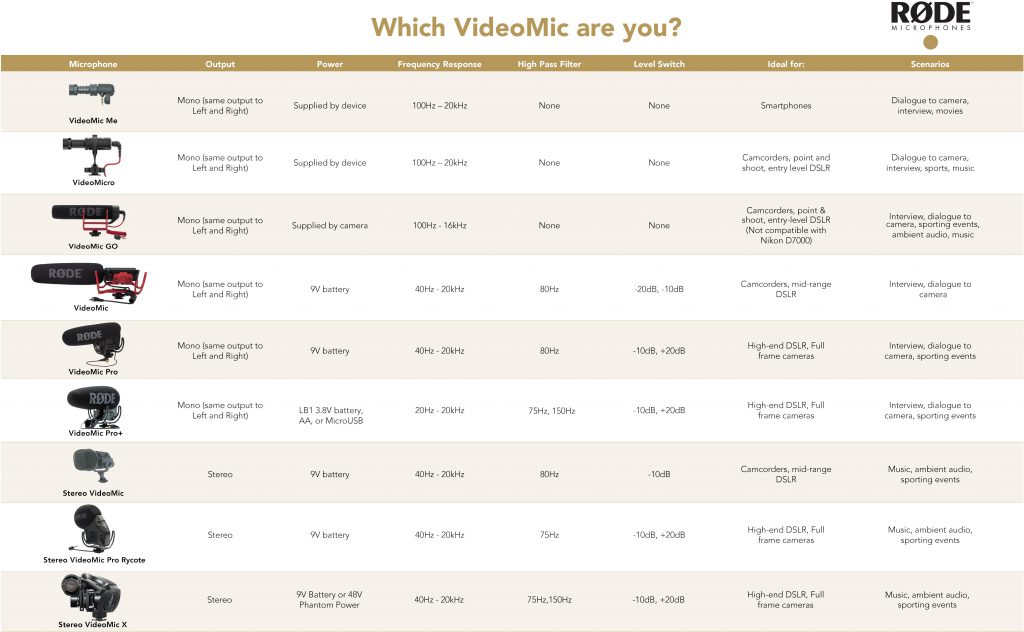RØDE’s range of VideoMics is among the most popular on-camera microphones available today. From the simple and compact VideoMicro to the professional, studio-grade construction of the Stereo VideoMic X, these devices have changed the way that people shoot and record video all around the world. One of the most common questions we receive from vloggers and videographers is “Is the RØDE VideoMic compatible with my camera?”
In this post, we will take a look at the basic requirements that you need to use the full range of RØDE VideoMics, and help determine which models are compatible with your camera.
- If your camera does not have an external microphone input, this means that unfortunately, no matter what you do, it’s impossible to capture audio with this camera. The best option, in this case, is to record all the audio from your microphone into a third-party recording device, even a smartphone will suffice! The smartlav+, iXY or iXLR are perfect for this. You will need to sync this audio to your video files later during post-production.
- For cameras that do feature an external microphone input, you’ll need to check what size input is provided. The industry standard and the size used on all RØDE on-camera microphones is a 3.5mm TRS mini-jack. If your camera has a unique size, such as a 2.5mm jack, adaptors are widely available in order to help make the RØDE VideoMic’s compatible with your camera.
- “Plug-In Power” is the name of a low-level voltage, usually 3 to 5 volts, which can be supplied directly by the camera via the 3.5mm mic input. The RØDE on-camera microphones that do not feature an onboard battery, such as VideoMicro and the VideoMic GO, rely on “Plug-In Power” to operate. Without it, your microphone will not work. Check with your camera manufacturer that “Plug-In Power” is supplied via your camera’s mic input before deciding whether or not to invest in these particular microphones. The RØDE on-camera microphones that do utilize their own onboard battery, such as the VideoMic, VideoMic Pro, and Stereo VideoMic Proare not reliant on “Plug-In Power” at all – they will send an audio signal to any 3.5mm mic input that you have available.
- RØDE currently has two different XLR adaptors available for the VideoMic range, the VXLR, and VXLR+. Whether or not your mic will work into an XLR input will depend on which adaptor you have. XLR mic inputs are commonly found in the professional audio industry, and are typically able to supply a power charge known as 48V “Phantom Power.” With the release of the VXLR+ this 48V “Phantom Power” is now converted down to the smaller charge your microphone needs. This means any microphone that runs on “Plug-In Power”, like the VideoMicro, VideoMic GO, or even the Lavalier and HS2 Headset Microphone can now be plugged into XLR connections via the VXLR+, and run off 48V Phantom Power. Any VideoMic that uses it’s own battery, like the VideoMic Pro, or VideoMic Pro+ doesn’t need this power anyway, so the standard VXLR adaptor will work if you wish to plug these microphones into your professional XLR inputs.
Lucky for you, the fine folks over at RØDE microphones put together this cheat sheet for you to easily find which VideoMic is right for you, check it out below!

